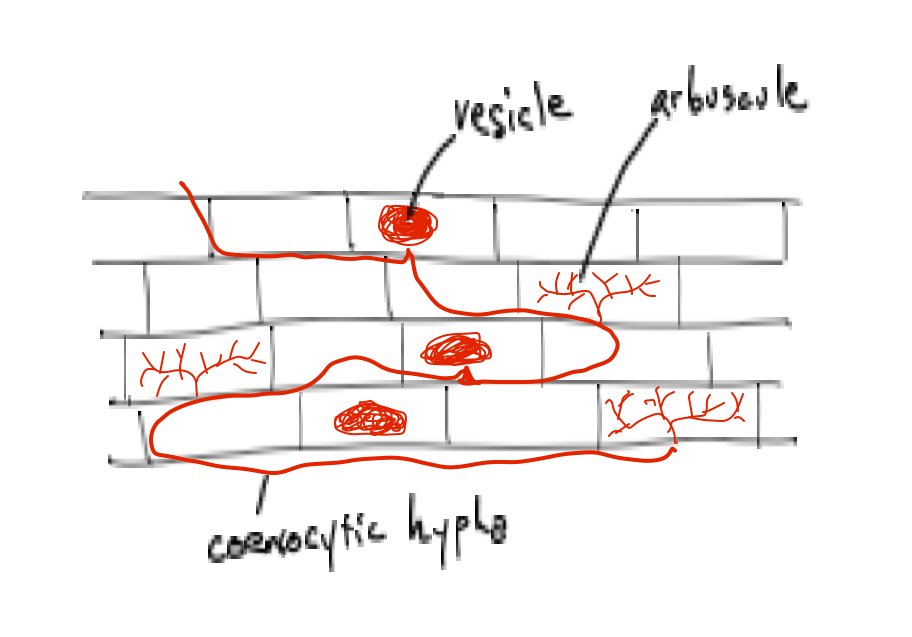Glomeromycota: important mycorrhizal fungi
The Glomeromycota are a very common, yet rarely seen, group of fungi. They are ubiquitous partners with angiosperms, forming associations called mycorrhizae, more specifically ’endomycorrhizae’, also called vesicular/arbuscular (VA) mycorrhizae. Most plants (more than 80%) are mycorrhizal and most of these form endomycorrhizae with a fungal associate in the Glomeromycota.

Taxonomy and Phylogeny
The Glomeromycota have long been considered a part of the bread mold (Zygomycota) group because of structural similarities (see below) , but recent studies, in particular molecular studies, have indicated that they are distinct from the bread molds and are closer to club fungi and sac fungi than to the bread molds. They are not a very diverse group (less than 500 species in the whole phylum) and morphologically they do not exhibit a great deal of variation.
Structure
Like most fungi, the Glomeromycota generally exist as filamentous hyphae, and like the bread molds, the hyphae have no cross-walls, i.e. the members are coenocytic. Commonly the hyphae produce relatively large spores. Unlike the club fungi and cup fungi they do not produce fruiting bodies. When inside plant cells most Glomeromycota produce characteristic structures called arbuscules that function to transfer materials between the fungus and plant. Also produced are vesicles, which are enlarged spherical parts of the hyphae where materials are stored.
Reproduction
Glomeromycota are strictly asexual. They produce spores but they do not appear to have any sexual process.
Matter and energy
Most, but apparently not all, members of the group are mycorrhizal (endomycorrhizal) and obtain carbohydrates from their photosynthetic associate (usually an angiosperm but there is one documented case of an association with a filamentous blue-green algae). All apparently obtain nutrients (i.e. minerals) from the soil and there is eviden ce that although most species are mycorrhizal, a few species also obtain food (i.e. carbohydrates) from the soil.
Interactions
Glomeromycota interact with many (nearly all) plant species and it is increasingly apparent that they significantly affect the behavior of their hosts, generally allowing them to grow more vigorously. The group was probably significant in the colonization of land by autotrophs and thus the origin of plants.
Further Reading
- USDA publication on endomycorrhizae
- “MYCORRHIZAL ASSOCIATIONS: The Web Resource” by Mark Brundrett
Media Attributions
- Glomeromycota © George Briggs is licensed under a CC BY-SA (Attribution ShareAlike) license

